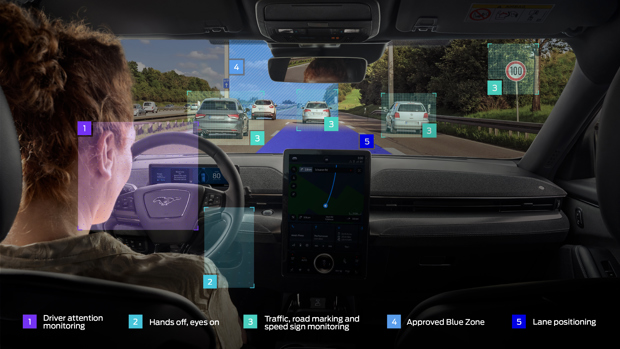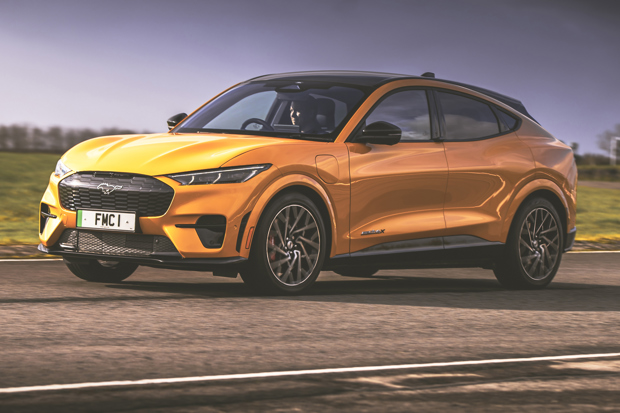Ford's hands-free driving tech gets UK approval

Ford has received regulatory approval for its hands-free BlueCruise advanced driver assistance system in Great Britain, making it the first of its kind approved in Europe.
The system has already been used by drivers of 193,000 BlueCruise-equipped Ford and Lincoln vehicles in Canada and the US, where it was named the Consumer Reports Top Rated Active Driving Assistance System.
BlueCruise technology approval from the UK’s Department for Transport means enabled Ford Mustang Mach-E models can use “hands-off, eyes-on” driving technology on 2300 miles of pre-mapped motorways in England, Scotland and Wales.
The first Ford Mustang Mach-E BlueCruise models will be launched in the UK with a monthly subscription of £17.99, which will allow drivers to use the system to cover extended road trips and holidays.
Owners of Ford Mustang Mach-E model year 2023 vehicles in Great Britain are the first to be able to activate BlueCruise via subscription. The first 90 days are included with the vehicle purchase. Ford expects BlueCruise to be activated in further European countries as regulatory conditions permit, and will roll out the system to further Ford vehicles in the coming years.
BlueCruise builds on the capabilities of Ford’s Intelligent Adaptive Cruise Control (IACC), which can automatically keep pace with traffic within legal speed limits, right down to a complete halt.
Before transitioning to hands-free driving, BlueCruise-equipped vehicles confirm that lane markings are visible, that the driver has their eyes on the road and that other conditions are appropriate.
The system uses animated cluster transitions featuring text and blue lighting cues to communicate that the feature is in hands-free mode, effective even for those with colour blindness. BlueCruise uses a combination of radars and cameras to detect and track the position and speed of other vehicles on the road, with a forward-facing camera detecting lane markings and speed signs.

The system employs an infrared driver-facing camera located below the instrument cluster to check the driver’s eye gaze and head pose and ensure their attention remains focused on the road.
Ford engineers validated the latest-generation advanced driver assistance systems, including BlueCruise, and its supporting features, by undertaking 100,000 miles of testing on European roads, in addition to over 600,000 miles covered in the US and Canada before the system was introduced to those markets last year.
Validation drives in Great Britain helped prove out the ability to handle circumstances drivers encounter every day, such as worn-out lane markings, poor weather, and different types of highway interchanges.
Martin Sander, general manager, Ford Model e, Europe, said, "It’s not every day that you can say you’ve placed one foot in the future, but Ford BlueCruise becoming the first hands-free driving system of its kind to receive approval for use in a European country is a significant step forward for our industry. Modern highways can be demanding even for the most confident drivers, and intimidating for many. BlueCruise can do some of the ‘heavy lifting’ to make highway driving less of a chore and give drivers that little extra confidence and convenience."
Jesse Norman, UK Transport Minister, said, "The latest advanced driver assistance systems make driving smoother and easier, but they can also help make roads safer by reducing scope for driver error."
If automated braking in my car caused an accident, could I hold the manufacturer liable?


